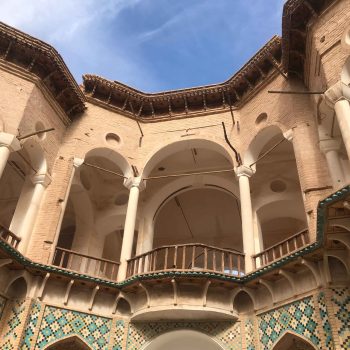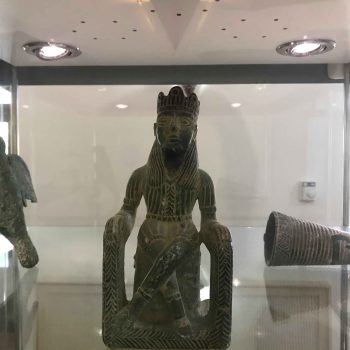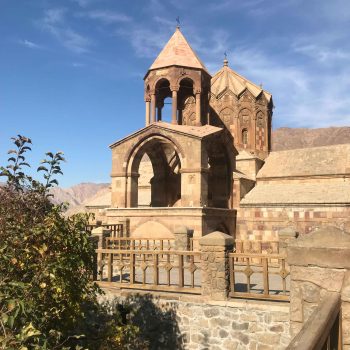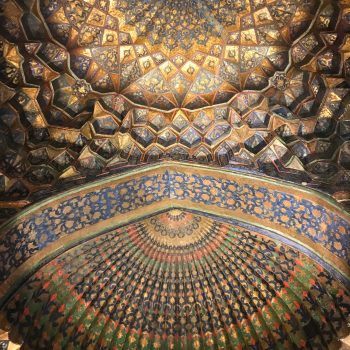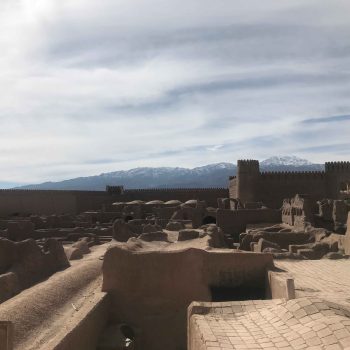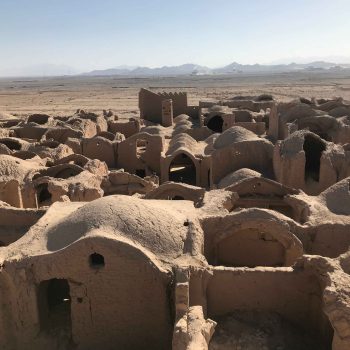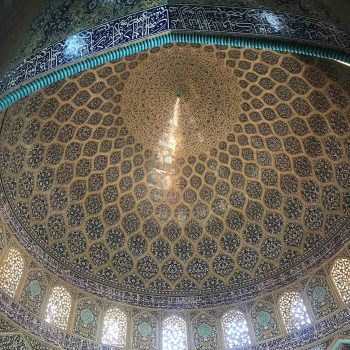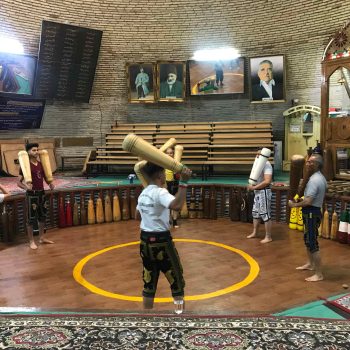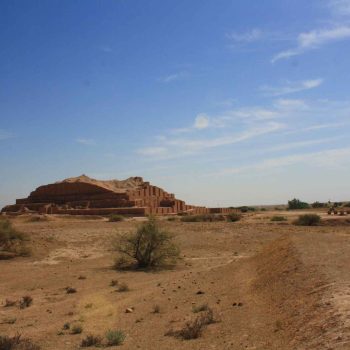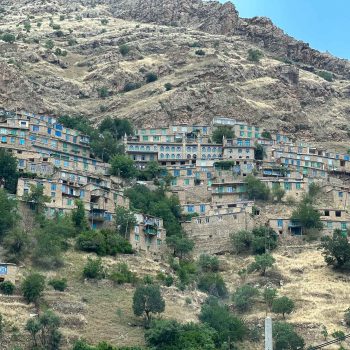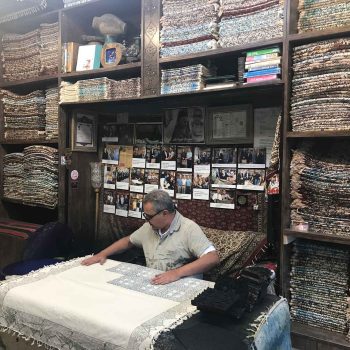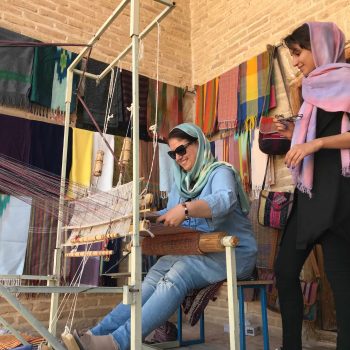DAY 1. Tehran
Arrival tehran meet and assist at airport transfer to hotel.O/N
DAY 2. Tehran
City tour of tehran visiting Golestan palace and bazar then azadi tower , we will eat lunch in Darband hills and at evening we can take a tour of the Nature Bridge . It is the largest pedestrian overpass built in Iran. The 270-metre (890 ft.) bridge connects two public parks__Taleghani Park and Abo-Atash Park—by spanning Shahid Modarres Avenue, one of the main highways in northern Tehran. we make a visit to Milad Tower; the sixth-tallest tower in the world standing at 435 meters from the base to the tip of the antenna (if it is open). O/N
DAY 3. Tehran / Alamout
Today we leave for Qazvin , we will visit to the historic monument of Alamoot Castle near Ghazvin. Alamut was a mountain fortress located in Alamut region in the South Caspian province of Daylam near the Rudbar region in Persia. The origins of the Alamut fortress can be traced back to the Justanid ruler Vahsudan who chose the site for the construction of a fortress. Alamut remained under Justanid control until the arrival of the Ismaili chief da’i (missionary) Hasan-i Sabbah to the castle in 1090 AD, marking the start of the Alamut period in Ismaili history. Between 1090 and 1256 AD, under the leadership of Hasan-i Sabbah, Alamut became the site of intense activity for the Shi’a NizariIsmai’lis, functioning as the headquarters of their state, which consisted of a series of unconnected strategic strongholds scattered throughout Persia and Syria, surrounded by huge swathes of hostile territory (the Seljuq Empire). In 1256, Ruknu-d-Dīn Khurshāh surrendered the fortress to the invading Mongols, and its famous library holdings were destroyed. Sources on the history and thought of the Ismailis in this period are therefore lacking and the majority extent is written by their detractors. After the Mongol destruction, the castle was of only regional significance, passing through the hands of various local powers. O/N
DAY 4. Alamout/Qazvin
Today we have city tour of Qazvin visiting Aminiha Hosseinieh, explore the Qajar Bathhouse, and visit Darb-e Koushk. Walking in the first street of Iran Sepah, experience the old Bazaar of Qazvin, the Atiq mosque, Ali Qapou portal, and then enjoy the Chehel Sotoun palace and Qazvin’s museum, at the end explore the Saraye Sa’d-o-Saltaneh.O/N
DAY 5. Qazvin/zanjan
Drive to Zanjan , it is known for its beautiful handicrafts such as sharp knives, silver jewelry , traditional sandals called charoogh, and malileh, a handcraft made with silver wires.Many villagers today are traditional carpet weavers, perhaps Zanjan’s most popular handicraft.We will visit sultaniyeh dome , It was built as the capital of Mongol Ilkhanid rulers of Iran in the 14th century. Its name refers to the Islamic ruler title ‘Sultan’.In 2005, UNESCO listed Soltaniyeh as one of the World Heritage Sites. The city flourished in Öljaitü period in which it was rebuilt and for this reason, lots of artists, craftsmen, and merchants were summoned to cooperate. The central magnet of Soltaniyeh’s several ruins is the Mausoleum of Ilkhan Öljeitü traditionally known as the Dome of Soltaniyeh. The structure, erected from 1302 to 1312 AD, has the oldest double-shell dome in Iran. Its importance in the Muslim world may be compared to that of Brunelleschi’s cupola for Christian architecture. The Dome of Soltaniyeh paved the way for more daring Iranian-style cupola constructions in the Muslim world, such as the Mausoleum of Khoja Ahmed Yasavi and the Taj Mahal. Much of its exterior decoration has been lost, but the interior retains superb mosaics, faience, and murals. O/N
DAY 6. Zanjan / Alisadr / Hamadan
Drive to hamadan visiting Alisadr cave , Avecina tomb( Persian Philosopher and doctor) Then Hegmataneh ( Ecbatana) pre-Islamic town and museum. Afterwards drive to the Jewish prophet tombs of Ester and Mordkhai. At the end drive to visit Ghorban tower and the lion statues.O/N
DAY 7. Hamadan / Kermanshah
Drive to Kermanshah on way visiting Ganjnameh ( Darius inscriptions ) and Anahita temple in kangavar . This temple was built in honor of ‘Ardevisur Anahita’, the female guardian angel of the waters 404 BC to 359 BC. Architecture of this temple coincides with palaces and temples built during the Achaemenian period . From Kermanshah the road runs along the bottom of a fine velvety fawn colored cliff.
The next place we stop by on the way is Bistoon which clusters around a source nearby a vertical rock wall. The carvings at Bistoon are set high in the rock facing by an important trade route for all travellers to see. The site is 30km from Kermanshah city near the village of Bistoon.
Then we head for Kermanshah which was one of the cities for recreation during the Sassanid era. It has a moderate and mountainous climate. The province has a rich Paleolithic heritage. Many caves with Paleolithic remains have been surveyed or excavated there. Some of these cave sites are located in Bistoon and north of Kermanshah. There is only one vestige to which we will pay a visit; the remarkable Taq-e Bostan (The Garden Arch). It is a group of rock sculptures, several of them protected by a porch roof which forms a grotto. Motifs date back to the great Sassanid period (3rd century A.D. until Islam). stay overnight in Kermanshah.
DAY8. Kermanshah / Uramanat
Today we leave Kermanshah for Uramanat Takht village. The Uramanat Takht Village is one of the attractive rural areas of Kurdestan which besides its panoramic views has valuable tourism capacities because of the annual performance of an ancient and wonderful ceremony of Peer Shahriar. The Sirvan River flows in the deep valleys of this region and enter Iraq. Here the lands are covered with walnut, pomegranate, fig and mulberry trees.
The tomb of Peer Shahriar is one of the creditable pilgrimage sites for the people, which was a Zoroastrian celestial before the advent of Islam. We stay overnight in Uraman Takht village.
DAY 9. Uramanat/Shushtar
Drive to shushtar , Shushtar is an origin of civilization in Iran. At evening We visit shushtar water mills , The construction of Shushtar watermills began during the Achaemenid period and ended in the Sassanid era. These waterfalls are also known as the historical hydraulic system of Shushtar.In this large complex, there are mills, waterfalls, canals, massive water tunnels, and waterfalls for the relaxation of visitors. UNESCO has inscribed Shushtar waterfalls in its World Heritage Sites’ list . then we visit Salasal Castle and bridge of Valerian which built by the Sassanids, using Romans prisoners of war as workforce, in the 3rd century AD , it was also the most eastern example of Roman bridge design and Roman dam, lying deep in Persian territory . O/N shushtar .
DAY 10. Shushtar / Susa / Ahwaz
drive to Susa to visit chogha zanbil ziggurat ( unesco world heritage ) . chogha Zanbil comprises the ruins of the holy city of the Kingdom of Elam, centered on a great ziggurat and surrounded by three huge concentric walls. Founded around 1250 BC, the city remained unfinished after it was invaded by Ashurbanipal in 640 BC. Its ziggurat is considered to be the best-preserved example in the world. It is one of the few extant ziggurats outside of Mesopotamia. The complex is protected by three concentric walls, which form three main areas of the “town.” The inner area is wholly taken up with the great ziggurat dedicated to the main god. The middle area holds eleven temples for lesser gods. In the outer area are royal palaces, a funerary palace containing five subterranean royal tombs, and a necropolis containing non-elite tombs. then we will visit the ruins of Haft Tepeh which is another Elamite archaeological site composed of many individual mounds, forms an imposing mass rising about the surrounding plain. The number seven, haft in Haft Tepe, the “Seven Mounds,” is used loosely to indicate the number of mounds in this large archaeological complex.after lunch we will visit The Apadana of the Palace of Darius in Susa , The Apadana (audience hall) of the Palace of Darius in Susa (Iran) was a large hypostyle room of 36 columns. Measuring 109 metres (357 feet) on each side, it was very similar to that of Persepolis in plan and dimensions with distinctive Persian columns, topped by two bulls . then we visit Susa museum and Acropol castle . after that we visit Danial tomb , The Tomb of Prophet Daniel , is the traditional burial place of the biblical prophet Daniel. Various locations have been named for the site, but the tomb in Susa, Iran (Persia), is the most widely accepted. Overnight ahwaz.
DAY 11. Ahwaz / Shiraz
Morning drive to shiraz (539km) on the way we will visit Bishapur (unesco heritage ) which was an ancient city in Sasanid Persia (Iran) on the ancient road between Persis and Elam. The road linked the Sassanid capitals Estakhr (very close to Persepolis) and Ctesiphon. then we will visit Anahita temple which is one of the most famous buildings in ancient city of Bishapur . This cubic structure is about 14 high and was built with clean cut stones attached together with metal staples inspired by Acheamenid architecture in Sassanid period. The roof was open due to the easy flow of water into the Shapur River so that the stored water could be drained off the aqueduct near the temple. Furthermore, the temple has no ceiling and was built 6 meters lower than the surface to direct the flow of Shapur river into it.It is a building without parallel. Once you’ve descended the stairway, you will find yourself on a small square, surrounded by high walls. The square itself must have been an undeep pool, surrounded by sidewalks. The doors in the walls give access to a corridor that surrounded the square, and which in turn gave access to the place where the aqueduct reached this square building.Just beside the ancient city of Bishapur, there are six bas reliefs of Sassanid Era in Tang-e Chogan valley. Some inscriptions of Sassanid kings on the four corners around a river in this valley are invaluable heritages. We countinue drive to shiraz and check in at hotel.
DAY 12. Shiraz
Full day city tour of shiraz Karim Khan Palace, Vakil Mosque, Vakil Bazaar, SarayeMoshir, Nasir Almolk Mosque, the tombs of Hafez and Saadi, Ali-Ebn-e-Hamzeh, Jahan Nama Garden, Eram Garden, and the tomb of Khajoy-e-Kermani
Shiraz has a reputation for being an enlightened city that has been at the cultural heartland of Iran for more than 2,000 years. It had once been the country’s capital.
Shiraz is crowned as the heartland of Persian culture, and this city of sophistication will never fail to conjure up images of roses and nightingales, gardens and poetry. Early in the morning, relish in the highlights of Shiraz when it was the capital of Iran during the Zand Dynasty. Be inspired by the glorious Karim Khan Palace, the splendid Vakil Mosque, Vakil Bazaar and SarayeMoshir with its splendid architecture and interesting ethnic souvenir shops, and the Nasir Almolk Mosque. Next, we will stop for a mouth-watering Iranian lunch at one of the traditional restaurants in Shiraz.
This gorgeous city is home to famous poets such as Hafez and Sa’adi, and historical sites from different eras dating back to 6,000 years ago can be found. Hafez is one of the great poets who impressed everyone with his mastery. His poems give us a special feeling and the peace in his tomb is really outstanding. Saadi is a poet, philosopher and mystic who is known as the father of tourism. He travelled to different countries and cities about seven centuries ago. Then he collected all his experiences in verse and rhyme-prose in two books named Boustan and Golestan. These two books give you lots of inspiration and information. We will get a chance to pay homage to the tombs of these great poets.
In the evening,we will visit the Eram Garden, a complete sample of Persian garden registered by UNESCO as a world heritage.Then we will visit Ali-Ebn-e-Hamzeh and be prepared to marvel at its beauties. Next, We will take a stroll through the Jahan Nama Garden and witness its tall and proud cedars. Finally we will visit the tomb of Khajoy-e-Kermani from where the perspective of the mysterious city of Shiraz will remain in our mind. Stay overnight in Shiraz.
DAY 13. Shiraz / Persepolis / Passargade / Shiraz
In the morning, we drive to visit Persepolis , Founded by Darius I in 518 B.C., Persepolis was the capital of the Achaemenid Empire. It was built on an immense half-artificial, half-natural terrace, where the king of kings created an impressive palace complex inspired by Mesopotamian models. The importance and quality of the monumental ruins make it a unique archaeological site. It seems that Darius planned this impressive complex of palaces not only as the seat of government but also, and primarily, as a showplace and a spectacular center for the receptions and festivals of the Achaemenid kings and their empire such as Nowruz.
The second place we stop by is Necropolis. Opposite Mount Rahmat, ten minutes to the north, proudly stands the Necropolis, the magnificent burial place of Achaemenid kings. The site also provides seven bas-reliefs dating back to Elamite and Sassanid periods.
After lunch we drive to Pasargadae which was the capital of the Achaemenid Empire in ancient Persia under Cyrus the Great who had issued its construction (559–530 BC). We will visit the most majestic monuments there of which the tomb of Cyrus the Great, the great founder of the Achaemanid Empire, is the oldest. The wonderful architecture of the tomb and the huge fertile land over there inspire the visitors. It was the worshiping place for the followers of several religions and is today an archaeological site and one of Iran’s UNESCO World Heritage Sites. Stay overnight in Shiraz.
DAY 14. Shiraz / Kerman
Drive to kerman we will pass by the shore of Lake Bakhtegan, Iran’s second largest lake which is fed mostly by the Kur River. Several dams on the Kor River has significantly reduced water flow into the lake, increasing its salinity and endangering the lake’s populations of flamingos and other migratory birds. On the way to kerman , we will stop by the Jame’ mosque of Neyriz, one of the most ancient Iranian mosques that had been a fire temple converted into a mosque at the beginning years of Islamic epoch. It seems that its eivan (balcony) belongs to the last century, while its mihrab has been added in 942. The tall eivan was built on architectural techniques of the Sassanid era. The mosque can claim to be one of the most valuable legacies of the Islam world. Stay overnight in kerman.
DAY 15. Kerman
today you will depart for Mahan which is well-known for the tomb of Shah Ne’mat Allah-e-Vali, the great Sufi leader, as well as Shazdeh Garden (Prince’s Garden). Shazdeh Garden (Prince’s Garden) is a historical Persian garden located 6km away from Mahan standing like a paradise in the heart of the desert. It consists of an entrance structure and gate at the lower end and a two-floor residential structure at the upper end. The land between these two is ornamented with water fountains that use the natural incline of the land to power them. The garden is a fine example of Persian gardens that make the most of climate and land formations. Next, you will visit the interesting Rayen Castle, which is a replica of the Bam Citadel. In the end, we hit the road to the Dasht-e Lut known as the Lut Desert, a large salt desert in Kerman and Sistan and Baluchistan which is the world’s 25th largest desert. We will trek through the desert and drive back to Kerman. stay overnight in Kerman.
DAY 16. Kerman
Today we will visit kerman city visiting Jabaliyeh Dome after that we go kerman Zoroastrian fire temple and museum , the next stop is Harandi Garden where 2 museums of Archeology and music located in it . we go to Vakil ( iranica ) caravansary for lunch after that we will visit Ganj Ali khan complex including mosque,hamam , bazaar and caravansary . the last 2 sites for today visit is Moshtaghieh Dome and Jame mosque of kerman . O/N
DAY 17. Kerman / Mehriz / Yazd
Morning drive to yazd ( 370 km) on the way to yazd we will visit zindin caravansary then we drive to Saryazd ancient village to visit Saryazd fortress ( the oldest safe deposit box ) and saryazd caravansary then have a lunch in mehriz and visiting 2000 years old Mehriz cypress and pahlavanpour Garden ( unesco persian Garden) driving to yazd overnight in yazd.
DAY 18. Yazd
Yazd city tour visiting Zoroastrian Towers of Silence & Fire Temple, Amir Chakhmaq Complex, Yazd Water Museum, Jame Mosque, Old City, Alexander , Dowlatabad Garden
Yazd, the oldest adobe city in the world which is surrounded by the 4000m summit of Shirkooh and two majestic deserts of Iran, Dasht-e-Kavir and Kavir-e-Loot. This ancient UNESCO-registered city is furnished with mosques of stunning beauty. The co-existence of the splendid fire temples and the holy sites of different religions astonish every visitor. Today’s tour begins with visiting Zoroastrian Towers of Silence; circular raised structures built by Zoroastrians for excarnation (for dead bodies to be exposed to carrion birds), and Fire Temple; the place of worship for Zoroastrians. Next, we will visit Amir Chakhmaq Complex; a prominent structure noted for its symmetrical sunken alcoves. It is a mosque located on a square of the same name. It also contains a caravanserai, a tekyeh (a place where Shiite gather for mourning of Muharram), a bathhouse, a cold water well, and a confectionery. Then we head for Yazd Water Museum. This 124- year-old Museum displays the tool, techniques used for the past 4000 years in Iran in creating underground waterways (called qanats) and connecting them to the city and field locations for agricultural and other uses. Yazd water museum was set up in 2000 in the wake of the first international conference on qanat in Yazd. The museum building has once been a merchant’s house built in 1929. Two qanats are running beneath the museum at different levels, which are reachable through a special stairway called Payab. This museum has put on display a variety of water objects from qanat to water ownership documents. The museum is one of the best tourist destinations in Yazd, which receive hundreds of visitors every day. Afterwards we pay a visit to the Jame Mosque, the old city of Yazd, the 15th-century domed school known as Alexander’s Prison because of a reference to this apparently dastardly place in a Hafez poem. Whether the deep well in the middle of its courtyard was in fact built by Alexander the Great and used as a dungeon seems doubtful, no matter what the guide says. The building is worth a look for the small display on the old city of Yazd, but mostly the fee covers access to a warren of craft workshops. We continue our tour with Dowlatabad Garden; an authentic Iranian garden that annually attracts thousands of domestic and foreign tourists. This is a complex built according to the original Iranian architectural style and consists of a large garden and some buildings. Finally, we pay a visit to confectionary and handicraft workshops. Stay overnight in Yazd.
DAY 19. Yazd / Meybod / Naein / Varzaneh
Today we leave Yazd for Isfahan (around 300 kms) at 8 in the morning. On the way, first, we will visit Maybod; an ancient city that goes back to the pre-Islamic arena and is the home to many ancient points of interests. It was the capital of Iran during the Mozaffarid period. Mozaffari kingdom originated from Meybod where the first king was born. One of the oldest castles in Iran is Narin Castle in Meybod, which dates from the Sasanid. It is one of the most important relics of the province dating back to the period before the advent of Islam to Iran and has been recorded as one of the national buildings. This ancient castle has been constructed on the top of Galeen hill and overlooks the city.
Then we drive to the beautiful city of Nain. More than 3,000 years ago, the Persian learned how to construct aqueducts underground (qanat in Persiankariz) to bring water from the mountains to the plains. In the 1960s this ancient system provided more than 70 percent of the water used in Iran. Nain is one of the best places in all the world to see these qanats functioning. We will stop by an abaya-weaving workshop and Jame Mosque in Nain. The abaya “cloak”, sometimes also called an aba, is a simple, loose over-garment covering the whole body except the head, feet, and hands, worn by clergymen and some women in parts of the Muslim World. Jameh Mosque Nain is one of the oldest mosques in Iran, and the town of Nain, close to Yazd is itself one of the oldest in Iran. Dating back to the 9th century, with its interiors dating back to the 11th century (as indicated by its Seljuki brickwork) the heritage listed mosque is actually still in use as a mosque today. The mosque is built in the “Khorasani style”, which refers to the first style of architecture appearing after the Muslim Conquest of Persia. The style is notable for its combination of Islamic and pre-Islamic influences. The carvings in the stone and wood are elaborate and beautiful. In the end, we move to Varzaneh which is famous regionally and all over the world for its spectacular desert having the highest sandy dunes. Here we will pay a visit to Jame Mosque and Ghoortan citadel of Varzaneh, have lunch in a local house, stay over night in varzaneh.
DAY 20. Varzaneh / Isfahan
Morning drive to Isfahan, the legendary city which never fails to enchant its visitors, is the pearl of traditional Islamic archaeology. This city is revived by the works of contemporary artists. Isfahan prides itself in having fascinating historical garden palaces. Legend has it that the city was founded at the time of Tahmoures or Keykavous and because of its glories has been entitled “Half the World”.
Today we start our tour with the famed Imam Square (Naqsh-e-Jahan), a huge square second in the world to Beijing’s Tiananmen Square. Then we visit Sheikh Lotfollah and Imam Mosques, Aliqapu Palace, Chehel Sutoon and Hasht Behesht Palaces, and finally visit one of the most famous bazaars in Iran, where we can purchase the arts & crafts for which Isfahan is so well renowned. Stay overnight in Isfahan.
DAY 21. Isfahan
We start our isfahan Armenian churches tour visiting Vank Cathedral (Vank Church) Built at the climax of Islamic architecture, Vank became the meeting place of the world of Biblical paintings and the world of lovely domes. then Exploring the beautiful church of Saint Mary in Jolfa quarter dating back to 1613 after that Visiting Hakoup Church, the first church of Armenians in Isfahan dating back to 1604.After leaving the Hakoup and Saint Mary churches, you can spend a little time in Julfa square.You can drink coffee in one of the coffee shops around the square. At evening free time .O/N
DAY 22. Isfahan / Kashan
After breakfast We drive to kashan , Kashan is one of the oldest and beautiful city of iran , The city is packed with historical places, great 18th century architecture, one of Iran’s most unique bazaars and offers great trips within a close distance. In fact, most sights are in walking distance of each other, making it quite easy to navigate your way around! We start our visiting with Tabatabaei house known for its courtyards, amazingly detailed and overall present stucco-work and tall wind wards, designed to keep designated rooms cool during a burning hot summer.then Borujerdi house constructed from 1857 on order of a wealthy merchant, it took eighteen years and 150 craftsmen to build this beauty. Also equipped with three wind towers, to make the place unusually cool during summers. The house features plaster-work similar to that of the Tabatabaei house, but has a dazzling dome that might just leave you speechless. Then we will visit The Hammam of Sultan Amir Ahmad A 16th century traditional bathhouse that used to be open to public. A narrow passage leads to a large octal shaped chamber, that used to be the dressing room and a place for relaxation and socialization. we will visit Fin Garden which is Listed as Unesco’s heritage for its great historical importance. It was in this garden, where Mr. Amir Kabir, the beloved prime minister in the Qajar era, was murdered at the order of the Shah! A story full of conspiracy and personal interests lead to the tragic death of this man, who is known to be one of the first reformers of Iran.O/N
DAY 23. Kashan /Qom / Qazvin / Takab
Drive takab enroute visiting Qom city and shrine of Fatima masoumeh , Qom is the second religious city in Iran after Mashhad because of being home to Fatima Masoumeh Shrine. Fatima Masoumeh is the sister of Imam Reza, the 8th Imam of Shia, whose shrine is located in Mashhad, Khorasan Province. In Shia Islam, women are often revered as saints if they are close relatives to one of the Twelve Imams. Fatima Masumeh is therefore honoured as a saint, and her shrine in Qom is considered one of the most significant Shi’i shrines in Iran. Overnight in takab.
DAY 24. Takab / Tabriz
We will visit Takab on our way to tabriz. It is an ancient city and a major economic center for the Medes, ancient Iranian people who lived in an area known as Media (northwestern Iran) and who spoke the Median language.
World Heritage Sites of Takht-e Soleymānknown as Azar Goshnasp (the Fire of the Warrior Kings) and Zendan-e Soleyman (Prison of Solomon) lie very near the present-day town of Takab. The complex includes a natural lake, the remains of a Zoroastrian fire temple eulogizing water and firebuilt during the Sassanid period and partially rebuilt during the Ilkhanid period, Anahita Temple,chartaqi(four arches); an architectural unit consisted of four barrel vaults and a dome, and a royal palace to which we will pay a visit. These ancient monuments portray the glory of the region in the ancient times.Finally, we continue all the way to tabriz and stay overnight there.
DAY 25. Tabriz
Iranian Azerbaijanis home to one of the most cultured and bravest races in Iran, the Azeris. And Tabriz is the most populated city in Azerbaijan, one of the historical capitals of Iran and the present capital of East Azerbaijan. The city is famous for its handicrafts, including hand-woven rugs and jewellery. Local confectionery, chocolate, dried nuts and traditional Tabrizi food are recognized throughout Iran as some of the best. Tabriz contains many historical monuments, representing Iran’s architectural transition throughout its deep history. Most of Tabriz’s preserved historic sites, which we will visit, belong to Ilkhanid, Safavid and Qajar.
Today’s tour begins with a visit to the exotic bazaar which is one of the oldest bazaars in the Middle East and the largest covered traditional bazaar in the world. It was inscribed as World Heritage Site by UNESCO in July 2010.
Then we pay a visit to the Blue Mosque, a famous historic mosque built in 1465 upon the order of Jahan Shah, the ruler of Kara Koyunludynasty which made Tabriz the capital of his Kingdom. In close proximity of the mosque, we will visit the Azerbaijan Museum; the major archaeological and historical museum in Tabriz. The museum consists of three major halls, a side yard, office rooms and a library. It mostly contains objects discovered from excavations in Iranian Azerbaijan, also some artworks and sculptures of artists. Then we walk to the Iron Age Museum; an archaeological site in the north, northeast and northwest of the Blue Mosque including cemeteries and traces of Iron Age pottery.
Afterwards, we will stop by El Goli; a large park in Tabriz that has a square artificial lake surrounded by sidewalks on four sides. There is also a building in the middle of the lake, with the traditional architecture of Iranian Azerbaijan. In the South of the lake, there is a hill covered by trees. Two beautiful stairways connect the sidewalks to the top of the hill. At the top of the hill there is a building with modern architecture (ParsHotel building). Finally we will visit the holy Serkis church constructed by ‘Petrossian’ in the Banvan neighbourhood of Tabriz in the year 1821 AD. We stay overnight in Tabriz.
DAY 26. Tabriz / Jolfa / Ardebil
We drive to ardebil on the way we will visit the historical border city of Julfa. Julfa is the stronghold of the Armenian Christians who possess a rich and unique culture of their own. We will visit the ancient churches there. The St. Stepanos Monastery (Maghartavank) is an Armenian monastery about 15 km northwest of Julfa city, East Azarbaijan Province northeast Iran. It is situated in a deep canyon along the Aras River on the Iranian side of the border between Azerbaijan and Iran. It was built in the 9th century and rebuilt in the Safavid era after several earthquakes damaged it. Then we continue to Ardabil.
Ardabil is a historical, beautiful and unforgettable city which is located in the skirts of Sablan Mountain (the bride of Iran Mountains). In this city the Safavid dynasty took up residence. We will visit the mausoleum of Sheikh Safi-ad-Din-e-Ardabili. It is an impressive ancient monument, comprising the following components: the mausoleums of Sheikh Safi and Shah Isma’il, Chini khaneh (meaning the house of chinaware), a mosque, Jannat Sara (meaning the house of paradise), Khanqah (the house of Dervishes), Cheragh Khaneh (the house of lamps), Shahid khaneh (the house of martyrs) and Chelleh Khaneh (the place where devotees shut themselves up during the forty days of Lent). The mausoleum of Sheikh Safi, the famous dome of which is called “Allah-Allah” has an octagonal interior. O/N
DAY 27. Ardebil / Fuman / Rasht
Today we drive to Rasht in Gilan Province. Rice has been cultivated in this region for many years, where some indigenous cultivars were conventionally bred by farmers.Fuman also produces popular cookies known as koluche. The city is also known for its statues, including the statue of Anahita, an ancient Iranian goddess, and the statue of the Four Girls. On the way to Fuman, we will visit Heyran region, a cluster of three villages in the eastern Alborz mountain range, within Astara County of Gilan Province in far northeastern Iran. Heyran is one of the most famous tourist destinations in Iran, due to the beautiful and accessible scenery. Because of its desirable microclimate at summertime, many villas have been built in the neighborhood. The main road is crowded on the weekends. Another major attraction of the region is Heyran Gondola lift (Télécabine). Construction of Heyran Gondola lift is an important step towards the development of tourism in Gilan Province. It has 30 ordinary cabins with six seats and also there are three special VIP cabins.The gondola lift is 1,500 meters (4,900 ft.) long through a beautiful landscape of the Alborz. It has views east of the Caspian Sea, views southwest to the Fandog Loo forests in the Alborz, and views north to the Azerbaijan border area in the Alborz. Stay overnight in Rasht.
DAY 28. Rasht / Qaleh rudkhan
We begin the day with a visit to the Rudkhan Castle, a brick and stone medieval castle in Iran. Located 25 km southwest of Fuman city north of Iran in Gilan province, it is a military complex which had been constructed during the Sasanian era (224-651), and later rebuilt during the Seljuq era by the Nizari Ismailis. The castle is built on two tips of a mount, with an area of 2.6 hectares (6.4 acres). Its architects have benefited from natural mountainous features in the construction of the fort.After crossing a mountainous winding route with dense forests, the first thing that one notices about the castle is its big entrance gate.
Then we will visit the historical village of Masooleh. Its architecture is one of the inquests in the world which is registered in UNESCO. Masooleh architecture is unique. The buildings have been built into the mountain and are interconnected. Courtyards and roofs both serve as pedestrian areas similar to streets. Masooleh does not allow any motor vehicles to enter, due to its unique layout. It is the only village in Iran with such a prohibition. However, the small streets and many stairs simply also wouldn’t make it possible for vehicles to enter. Yellow clay coats the exterior of most buildings in Masooleh. This allows for better visibility in the fog.
Afterwards, we have an excursion to the Anzali Lagoon, a coastal lagoon, in the Caspian Sea near Bandar-e Anzali, in the northern Iranian province of Gilan. The lagoon divides Bandar-e Anzali into two parts, and is home to both the Selke Wildlife Refuge and the Siahkesheem Marsh. It is one of the biggest and most beautiful lagoons in the world known as a good place for watching unique birds and beautiful flowers such as water lily. Its water ranges from fresh near the tributary streams to brackish near the mouth into the harbor and the sea. Studies indicate that in the 19th and early 20th centuries the lagoon had a much higher salinity.
DAY 29. Rasht / Tehran
Morning visiting Rasht city And Saravan rural museum then drive back tehran .O/N
DAY 30. Tehran
Transfer to airport for Departure flight .


